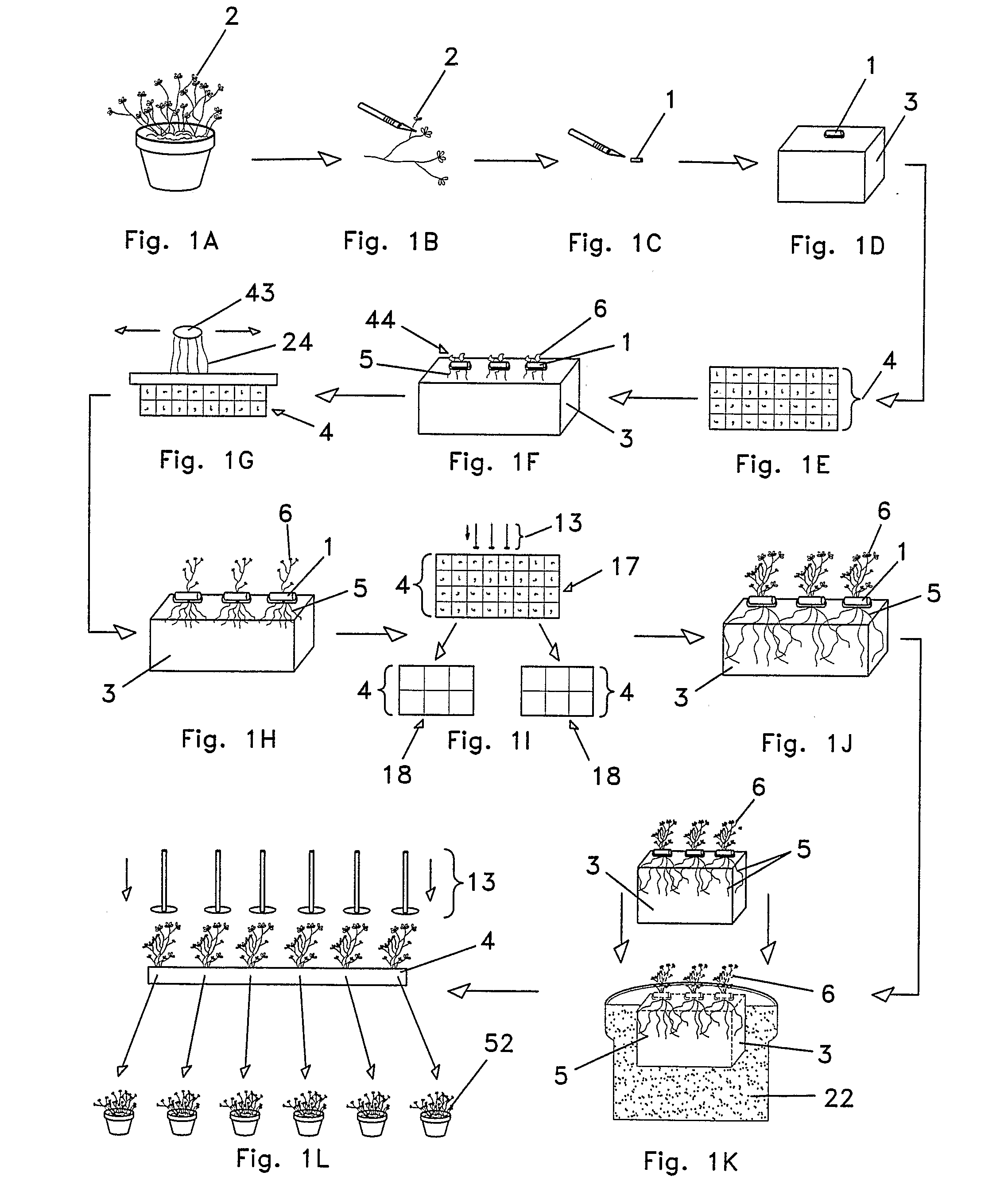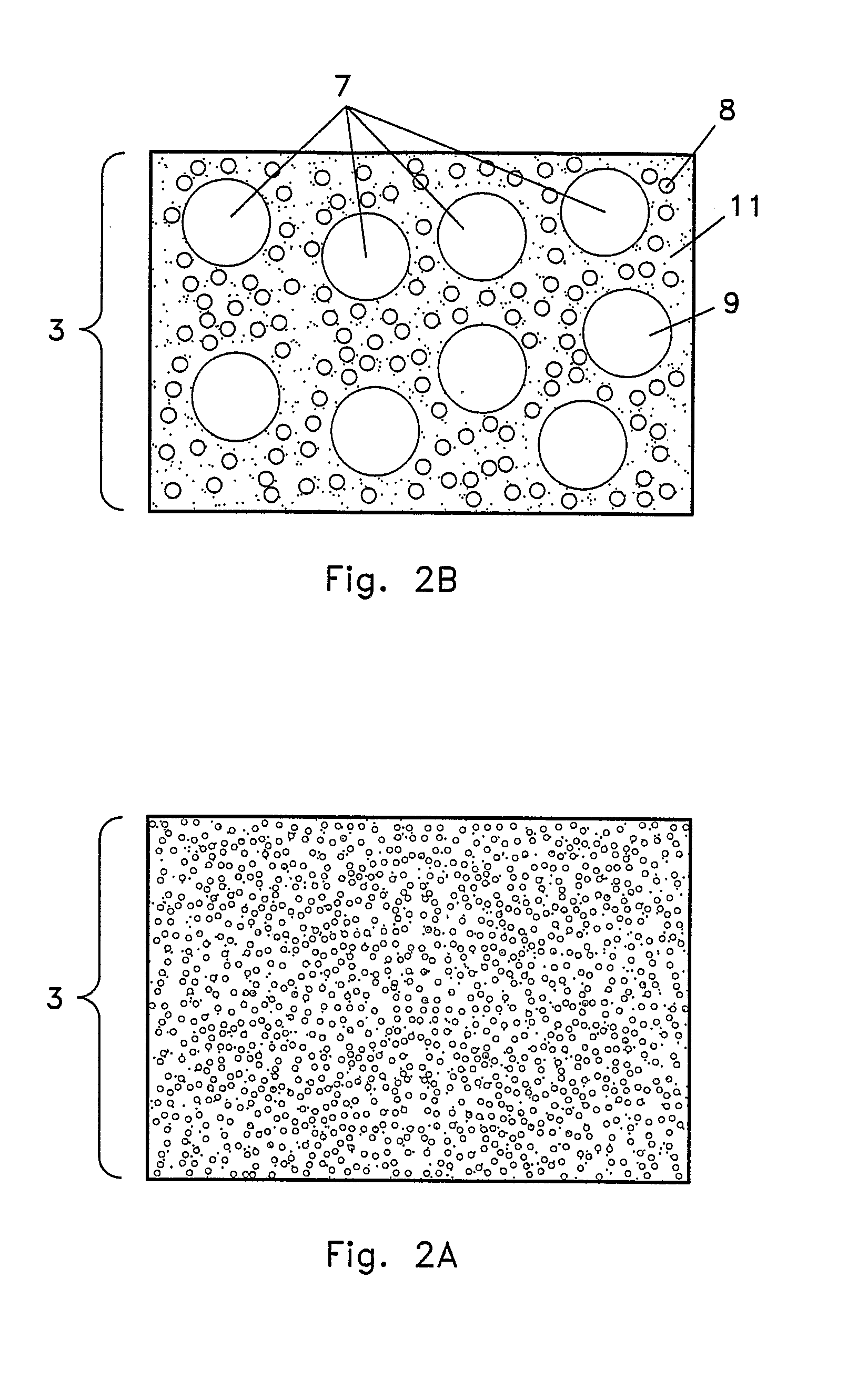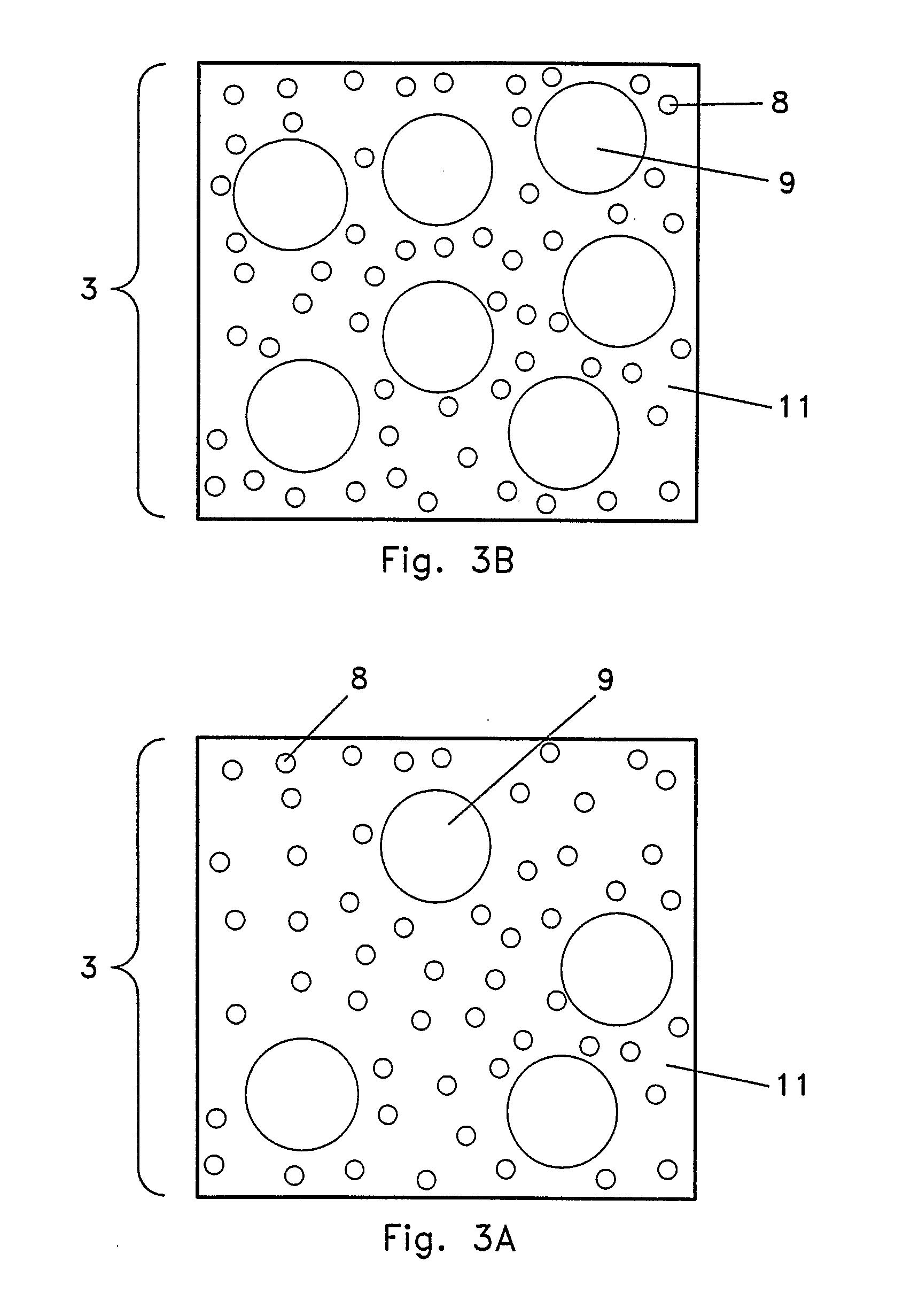Yet, traditional tissue culture may cause
high mortality rates and high labor costs.
Tissue culture may be limited, therefore, to those few crops that can be sold at a premium price to recover the high costs of tissue culture.
Traditionally, each step in the tissue culturing process may require manually handling of the explants which may be both labor intensive and may increase the likelihood for the introduction of
disease through
contamination and explant mortality.
Uniformity of size and development may greatly increase yield, but manual
processing may be expensive and may increase overall production costs.
Disease in plants is not acceptable.
It can diminish the value of a
crop by reducing the productivity of the
crop through either death of the
plant or
poor quality finished crops.
Most plants may be propagated using traditional methods which may not be automatically screened for the presence of
disease.
This may also decrease the likelihood of the introduction of
disease through the traditional propagation method of using a mother
plant that may have a disease that has not expressed itself.
These known support structures may not adequately address improving the yield of the finished tissue cultured plants through more uniform distribution of
plant growth hormones and nutrients and may not allow for
automation during the stages of the tissue culture process, among other reasons.
Lack of uniformity of both the size of the
ceramic fibers and the voids between the fibers may even result in ununiform or non-uniform distribution of
plant growth hormones and nutrients.
Ununiform or non-uniform distribution may result in fewer root and
shoot bud formations which may decrease the yield or even the potential quality of each explant.
It may even result in the death of explants possibly due to inadequate
plant growth hormones or nutrients.
Uneven growth may result which may cause uneven maturity periods that could even result in the need for manual grading of the explants or plantlets for
quality control which is labor intensive and therefore increases labor costs.
Another problem of using
ceramic fibers may be that as the fibers may need to be molded into a size and shape useful for tissue culture production.
A terminal or
cut end of the
ceramic fibers may be where the explants rest on the support structure and these ends may be sharp enough to damage or perhaps even pierce the
cell structure of the explants which may reduce the explants vigor.
A damaged cellular structure may increase the length of time for the explants to have
cellular differentiation, development of
shoot and root buds and even the maturation from an explant into a
plantlet.
The surface area of the explants that may be in direct contact with the plant growth hormones and nutrients may not be optimal and thus may be reduced with this type of structure.
Lack of contact with nutrients and the like may result in fewer root and
shoot bud differentiation in Stage 1 and may result in poor yields.
In Stages 2 and 3, root and shoot growth may not be uniformly encouraged possibly resulting again in increased production time, lower yields and even ununiform maturity periods which may cause increased production costs.
Because yields in traditional Stage 1 tissue culture may be as low as about 50% or less, any additional reduction of yield may greatly increase production costs perhaps even regardless of any labor savings due to fewer transfers between Stages.
Ununiform or non-uniform voids due to irregular ceramic fibers and even compression of fibers during the
cutting of the fibers into a
usable shape could create voids having either too much air or too much liquid.
Lack of root development could increase the time during Stages 2 and 3 and may increase the
mortality rate of the
plantlet during Stage 4 when the
plantlet may no longer be in a controlled environment of a laboratory.
This may increase production costs making the process uneconomical.
Another problem with a ceramic
fiber support structure may by that it may not lend itself to
automation of transfer from
one stage to another or perhaps even throughout the tissue culture process.
During
automation, it may be difficult to utilize equipment that can move the ceramic fibers without damaging or even splitting the ceramic
fiber unit.
This may increase labor costs and overall production costs.
This piercing process may be done manually which may not consistently produce uniformity.
The ununiform or non-uniform aperture of the membrane could prevent easy
insertion of the explants onto the medium thereby possibly increasing the time to transfer the explants onto the medium and may increase labor costs.
The membrane may
pose another problem in that it may prevent the uniform distribution of new concentrations of plant growth hormones and nutrients because the membrane may cover the medium.
In this particular
assembly, it may not be adequately feasible to rinse the medium in a downward motion due to the membrane.
This could result in uneven differentiation of root and shoot buds during Stage 1 and uneven development of those root and shoot buds during Stages 3 and 4.
The plantlets may need to be graded by size in order to increase yield in Stage 4 which may result in an increase in the amount of time and labor needed earlier in the tissue culturing process.
Also, the inconsistency resulting between plantlets could mean that some of the plantlets moving into Stage 4 could be immature and could possibly die.
This may result in decreased yields and increased production costs due to the labor to grade, transfer and then to discard the dead plantlets.
Yet another problem with a membrane may be that because it may cover the entire surface of a medium, it may prevent any automation from occurring.
A membrane could prevent extraction of the support structure by automation thereby increasing labor costs during any transferring processes.
Further, a membrane may make manual transfers more difficult because of the need to
cut away the membrane without damaging the developing explants and plantlets.
This may increase labor costs.
Another problem with an
assembly as disclosed in the Walton patent, may be that it may employ a hygroscopic gel in a medium which could attract water.
The gel may thereby possibly reduce the effectiveness of plant growth hormones and other nutrients due to ununiform or non-uniform
capillary action or ununiform or non-uniform delivery of the required plant growth hormones and nutrients.
Remaining old plant growth hormones and / or nutrients combinations with new plant growth hormones and nutrients may not produce consistent
cell differentiation and subsequent development of root and shoot buds.
Without consistent and uniform differentiation and development of root and shoot buds, manual grading of the explants and plantlets may be necessary between each stage possibly increasing labor costs and preventing the opportunity for automation of the transfer process.
Increased water availability from the hygroscopic gel may also cause increased
water intake by the explant or plantlet which may increase the likelihood of
vitrification (a translucent water soaked succulent appearance) which leads to mortality and reduces yields.
The problem with this type of support structure may be that the amount of medium and therefore concentration of plant growth hormones and nutrients may be dependent on the
porosity of the platform.
As the explants and plantlets mature, they may become larger and therefore heavier and may place more downward pressure on the platform.
Some inventions may compensate for an increased pressure on the
liquid medium below, yet there could be potential for inconsistent dispersion of the plant growth hormones and nutrients due to the increased
mass of the explants and plantlets and the mechanical action of the
floating platform.
This may result in an uneven distribution of plant growth hormones and nutrients that could result in ununiform or non-uniform
cell differentiation and development of root and shoot buds.
This may lower overall yield and may result in the need for manual grading of explants or plantlets that may increase labor costs.
Because the developing roots of the explants or plantlets may not be supported, it may be impossible for the process to be automated other than the movement of the entire platform to a new medium.
Therefore there may be limited ability to move the developing explants and plantlets from a
high density to a lower density.
This may result in the need to use a lower density of explants to begin with which may use expensive laboratory or
sterile environment space uneconomically.
The developing explants could be manually transferred to a new platform at a lower density which may cause increased labor and may increase overall production costs.
 Login to View More
Login to View More  Login to View More
Login to View More 


